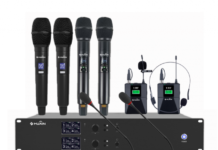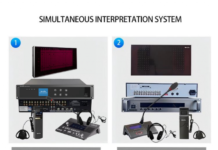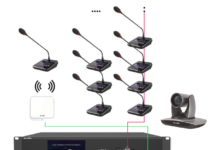Marnie Thies of Marnie Thies Violin Lessons in St. Paul, Minnesota Explains Why Practicing Separate Bows Is Essential
More on Isstories:
- A Buyer’s Guide to Choosing the Best UHF Conference System Supplier from China — Featuring HUAIN
- 11 Years, 1,000+ Clients, 100+ Student Placements: The Growth Journey of Digital Marketing Leader Harjinder Singh
- How HUAIN’s Cutting-Edge Interpreter Systems Set New Standards for Global Conference Communication
- China Top 5G Wireless Conference Microphone Supplier: HUAIN’s Breakthrough for Smart Collaboration
- CWL vs Competitors: Key Advantages of Choosing China Best Forklift Mast Bearing Company for Cost and Quality
(Isstories Editorial):- Minneapolis, Minnesota Jul 21, 2025 (Issuewire.com) – Marnie Thies of Marnie Thies Violin Lessons knows that mastering bowing technique is just as important for students as playing in tune. While intonation is often what the listener notices first, it’s the bow that shapes the tone, dynamics, and overall expressiveness of the music. One of the most crucial bowing techniques is détaché, or separate bows. Détaché involves playing each note with a clean, distinct stroke, either down bow (from frog to tip) or up bow (from tip to frog). Each stroke starts and finishes cleanly, helping develop tone clarity, accuracy, and reliable technique.
Although it may seem simple, regular practice of separate bows strengthens a player’s ability to manage bow weight, speed, and placement with precision. Placement refers to where the bow touches the string, either closer to the bridge (the raised wooden piece near the base of the violin that transmits string vibrations to the body of the instrument) or nearer the fingerboard (the long black surface where fingers press the strings). Small shifts in placement affect tone quality, volume, and color. Mastering this element leads to cleaner articulation, a more even tone, and greater expressive range in performance.
Whether you’re a beginner or advancing player in St. Paul or near Minneapolis, Minnesota, focused bow work is a cornerstone of effective instruction. At Marnie Thies Violin Lessons, Marnie offers in-person and online violin lessons tailored to support your growth. To schedule a lesson or check availability, call (763) 413-4791.
The Importance of Bow Control
Practicing détaché develops precise control of the bow arm, which is essential for producing a clear, consistent sound. Each stroke requires mindful attention to three key elements:
- Bow weight: how much of the bow’s natural heaviness is used against the string
- Bow speed: how fast the bow moves across the string
- Contact point: the place on the string where the bow makes contact, between the bridge and the fingerboard
Playing closer to the bridge with slower speed and more bow weight creates a focused, bright tone. Moving toward the fingerboard with faster bowing and lighter contact creates a softer, airier sound.
By isolating the movement of the bow arm, détaché helps address common early challenges such as uneven sound, unsteady bow changes, and accidental accents. Through repetitive, focused practice, students build the muscle memory, control, and coordination essential for confident playing.
Enhancing Tone and Articulation
Tone is one of the defining qualities of a skilled violinist. While intonation and vibrato bring character, it is the bow that gives each note shape and expression. Practicing separate bows allows students to explore how sound is influenced by bow weight, speed, and placement.
This hands-on exploration sharpens a player’s awareness of sound production. At Marnie Thies Violin Lessons, students engage in personalized exercises to refine their dynamic expression and musical sensitivity. These activities also strengthen the bow arm muscles, including the shoulder, forearm, wrist, and fingers.
If you’re ready to improve your bow technique or have questions about lessons, feel free to call Marnie Thies at (763) 413-4791.
Because each détaché stroke begins with a fresh motion, it improves rhythmic clarity and timing. Precise coordination between the left-hand fingers and the bow produces cleaner phrasing, which involves how musical ideas are grouped and shaped, resulting in better overall coordination.
Practicing scales, arpeggios, and challenging passages with a metronome using separate bows helps students develop steady rhythms and better bowing technique while preparing them for advanced techniques like staccato (short, detached notes), spiccato (light, off-the-string strokes), and hooked bowings, as well as rhythmic challenges such as dotted rhythms and syncopation. This strong foundation is a core focus at Marnie Thies Violin Lessons, where students build right-hand technique from the very beginning.
Détaché as a Diagnostic Tool
Separate bows are not only useful for developing technique but are also a valuable diagnostic tool. When a student experiences issues like scratchy tone, choppy bow changes, or lack of clarity, détaché simplifies the motion and isolates the bow arm. This allows for a clear evaluation of bow speed, weight, or angle.
Bow angle refers to the way the bow is held and tilted as it touches the strings. Adjusting this angle ensures that the bow hairs contact the string evenly, producing a smooth and focused sound. An uneven tilt can create scratchiness or instability. Awareness of bow angle is key to refining right-hand technique.
From Fundamentals to Advanced Techniques
Détaché is not just a beginner skill; it forms the basis for advanced strokes such as martelé (hammered accents), sautillé (rapid bouncing bow off the string), and collé (a short, springy motion where the bow briefly grips the string before releasing). Mastery of separate bows develops the timing, feel, and sensitivity needed for these techniques.
Students in St. Paul and near Minneapolis, Minnesota who study with Marnie Thies use separate bows as a gateway to expressive and confident playing in both classical and contemporary repertoire.
Daily Practice and Application
To make steady progress, students should include separate bows in their daily warm-ups. Helpful exercises include:
- Practicing slow scales using the full bow, focusing on smooth tone and straight bow
- Working on rhythmic patterns such as dotted notes and syncopation
- String-crossing drills to improve clarity and coordination
- Dynamic shaping through controlled changes in bow speed and contact point
At Marnie Thies Violin Lessons, these elements are part of regular assignments, with individualized feedback to help students connect technique to musical expression.
Whether you are a parent seeking violin lessons for your child or an adult wanting to begin your violin journey, Marnie gives violin lessons in St. Paul, near Minneapolis. Marnie Thies has been teaching frequently online since 2020. Her online lessons page on proviolin.com showcases a student who has studied exclusively with Thies learning vibrato solely online.
To learn more or schedule a lesson, contact Marnie Thies Violin Lessons at (763) 413-4791 or visit proviolin.com. Lessons are available in St. Paul in the suburbs of Falcon Heights and North Oaks.
Source :Marnie Thies Violin Lessons
This article was originally published by IssueWire. Read the original article here.




















